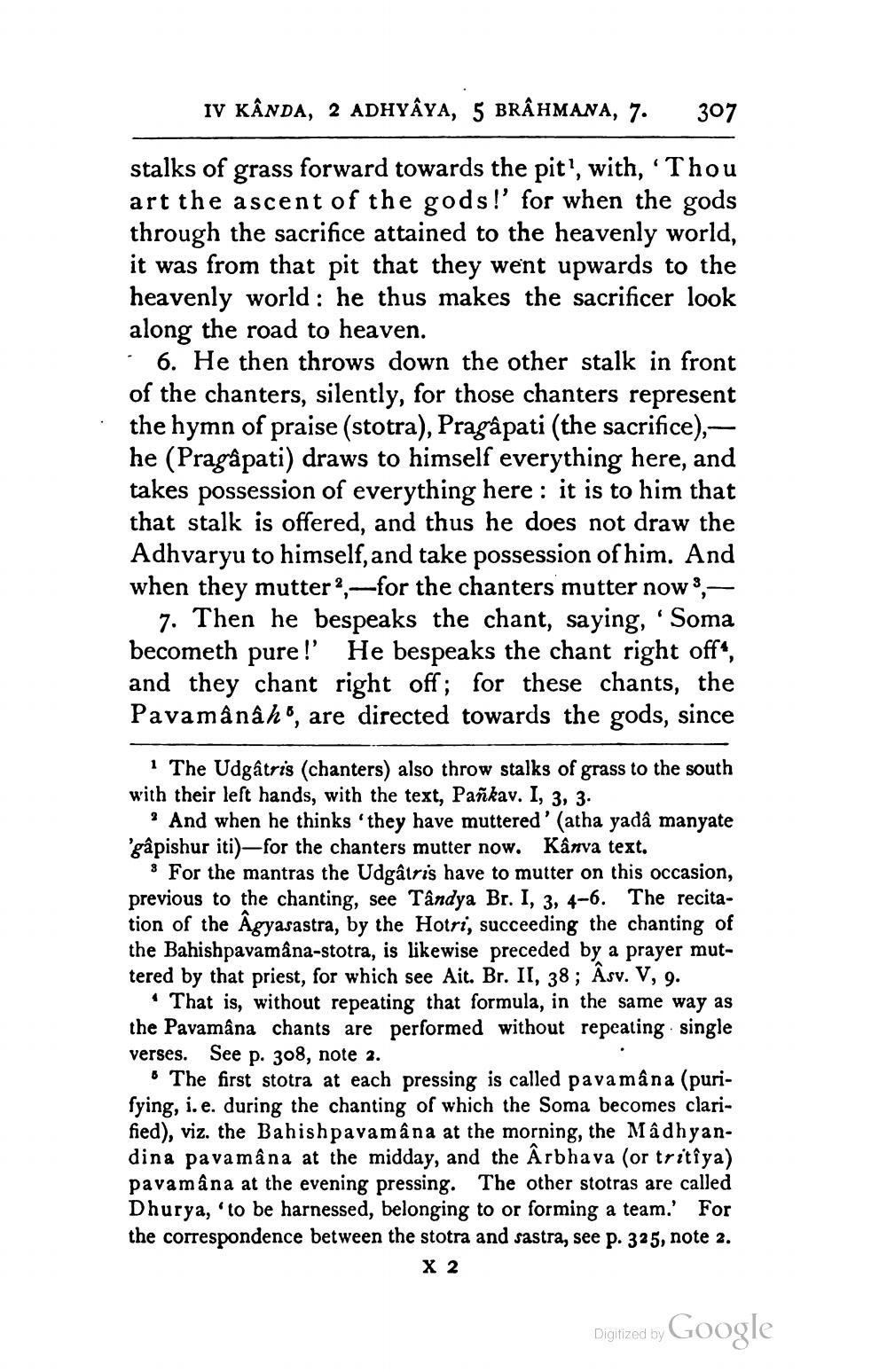________________
IV KÂNDA, 2 ADHYÂYA, 5 BRÂHMANA, 7.
307
stalks of grass forward towards the pit', with, 'Thou art the ascent of the gods!' for when the gods through the sacrifice attained to the heavenly world, it was from that pit that they went upwards to the heavenly world: he thus makes the sacrificer look along the road to heaven. - 6. He then throws down the other stalk in front of the chanters, silently, for those chanters represent the hymn of praise (stotra), Pragâpati (the sacrifice), he (Pragậpati) draws to himself everything here, and takes possession of everything here : it is to him that that stalk is offered, and thus he does not draw the Adhvaryu to himself, and take possession of him. And when they mutter ?,- for the chanters mutter now?,
7. Then he bespeaks the chant, saying, 'Soma becometh pure!' He bespeaks the chant right off“, and they chant right off; for these chants, the Pavamânâh”, are directed towards the gods, since
1 The Udgâtris (chanters) also throw stalks of grass to the south with their left hands, with the text, Pañkav. I, 3, 3.
? And when he thinks 'they have muttered' (atha yada manyate 'gâpishur iti)—for the chanters mutter now. Kanva text.
* For the mantras the Udgâtris have to mutter on this occasion, previous to the chanting, see Tândya Br. I, 3, 4-6. The recitation of the Ägyasastra, by the Hotri, succeeding the chanting of the Bahishpavamâna-stotra, is likewise preceded by a prayer muttered by that priest, for which see Ait. Br. II, 38; Asv. V, 9.
That is, without repeating that formula, in the same way as the Pavamâna chants are performed without repeating single verses. See p. 308, note 2.
• The first stotra at each pressing is called pava mâna (purifying, i.e. during the chanting of which the Soma becomes clarified), viz. the Bahishpavamâna at the morning, the Mâdhyandina pavamâna at the midday, and the Arbhava (or tritîya) pava mâna at the evening pressing. The other stotras are called Dhurya, 'to be harnessed, belonging to or forming a team.' For the correspondence between the stotra and sastra, see p. 325, note 2.
X 2
Digitized by Google




